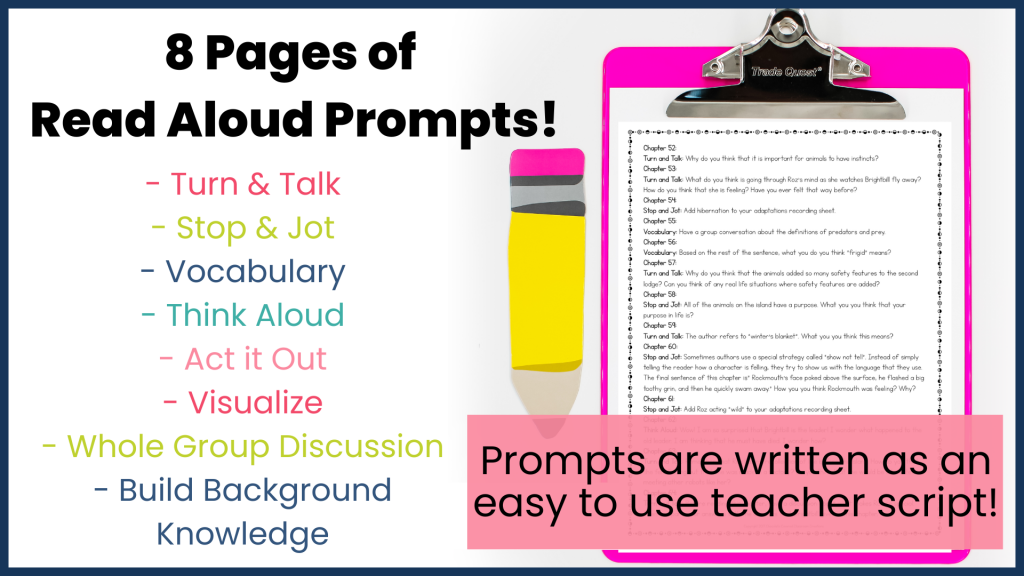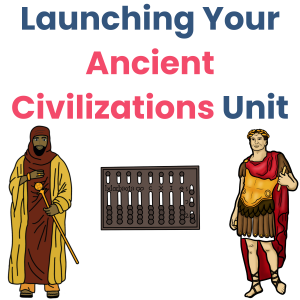Are you looking for a way to bring your classroom alive with meaningful discussions, engaging activities, and interdisciplinary learning? The Wild Robot by Peter Brown might be just the perfect read-aloud for your upper elementary students!
This heartwarming and thought-provoking novel has captured the imaginations of educators and students alike. Packed with themes of survival, community, empathy, and nature, it’s an ideal book for sparking curiosity and fostering critical thinking. Today, we’ll explore why The Wild Robot is a classroom favourite, how to make the most of it as a read-aloud, and the remarkable impact it can have on your students.
Making the Most of The Wild Robot: Tips for Read-Aloud Success
If you’re ready to integrate this book into your classroom, these strategies will ensure that every chapter captivates your students, promotes learning, and connects to real-world ideas.
Pre-Reading Activities
Prepare your students for Roz’s exciting adventures on a remote island with these activities:
- Prediction Game: Share the book cover and title with your class and ask, “What do you think this story might be about? What challenges might a robot face in the wild?”
- Survival Needs Chart: Create a chart with two columns labelled “Animals” and “Humans.” Have students brainstorm and list what each needs to survive (e.g., food, water, shelter). Discuss how these needs are similar and how they differ, tying it to themes of adaptations and empathy.
During Reading
Here’s how to guide your read-aloud sessions to keep students engaged:
- Interactive Prompts: Pause and ask questions like, “Why do you think Roz acts this way? How do Roz’s actions affect her surroundings?” Encourage students to “Turn and Talk” with a partner or jot down responses in their journals.
- Visualize the Setting: Peter Brown’s rich descriptions of the island make it easy for students to practice visualizing. You could even have them draw their interpretation of the scene after a read-aloud session.
- Model Analysis Skills: Discuss how the author uses figurative language and craft to make readers connect with Roz and the animals on the island.
Want eight pages of print-and-go reading prompts? Click HERE to check them out!

Post-Reading Activities
Make the lessons from The Wild Robot stick with these wrap-up ideas:
- Character Connections: Have students write a short paragraph about how they relate to Roz or another character.
- STEM Challenge: Inspired by Roz’s survival tactics, challenge students to build a shelter using limited materials.
- Explore Ecosystems: Use the book’s nature-filled setting to teach about ecosystems, animal adaptations, and food chains. For a detailed science integration framework, check out this interactive read-aloud unit, which includes fun STEM challenges and ecosystem activities.
Connecting The Wild Robot to Real-World Learning
One of the most powerful aspects of The Wild Robot is how seamlessly it weaves fictional storytelling with real-world themes, making it ideal for interdisciplinary teaching. Consider these connections:
- Science: Tie the story to lessons on ecosystems, adaptations, and conservation. For instance, Roz’s interaction with animals offers a springboard to discuss symbiotic relationships in nature.
- Technology: Discuss how technology can adapt to different environments and its role in modern life.
- Social Studies: Explore topics like community building and what it takes for individuals and groups to coexist peacefully. Use Roz as an example of fostering collaboration and understanding.
How to Keep Students Engaged
Even the most captivating read-aloud requires strategies to keep students focused and excited. Use these tips:
- Story Maps: Encourage students to plot out key events as they happen using graphic organizers.
- Reader’s Theater: Assign students characters or sections of the text to act out key moments.
- Chapter by Chapter Anticipation: End each read-aloud session with a cliffhanger or ask students what they think will happen next. This creates enthusiasm for the following day’s session.
For comprehension and critical thinking assessment, have students complete the provided response activities from the interactive read-aloud unit.
Bring Learning to Life with The Wild Robot
Using The Wild Robot as a classroom read-aloud transforms learning into an immersive and interdisciplinary experience. Whether it’s fostering empathy, sparking discussions about ecosystems, or challenging students with STEM activities, this novel has something for every learner in your classroom.
For an even more dynamic and meaningful experience, explore The Wild Robot Interactive Read Aloud Unit. It’s packed with everything you need—graphic organizers, interactive prompts, and science-based activities that enhance learning and engagement.
Get ready to inspire your students with Roz’s incredible adventure. Happy reading!

PS. Want to learn more about using read-aloud in the upper elementary classroom? Click HERE to read my blog post about making read-aloud time magical in the upper elementary classroom.




